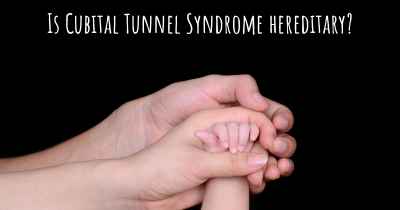What is the history of Cubital Tunnel Syndrome?
When was Cubital Tunnel Syndrome discovered? What is the story of this discovery? Was it coincidence or not?

Cubital Tunnel Syndrome:
Cubital Tunnel Syndrome (CTS) is a condition that affects the ulnar nerve as it passes through the cubital tunnel, a narrow passageway on the inside of the elbow. This syndrome is also known as ulnar neuropathy or ulnar nerve entrapment. The ulnar nerve is responsible for providing sensation to the little finger and half of the ring finger, as well as controlling some of the muscles in the hand.
Historical Background:
The history of Cubital Tunnel Syndrome dates back to the early 19th century when it was first described by Sir Astley Cooper, an English surgeon, in 1824. He identified the ulnar nerve as the source of symptoms in patients experiencing pain, tingling, and weakness in the hand and forearm.
Over the years, medical professionals have made significant advancements in understanding and treating Cubital Tunnel Syndrome. In the late 19th century, Sir James Paget, a British surgeon, further contributed to the knowledge of this condition by describing the anatomical structures involved in ulnar nerve compression at the elbow.
Causes and Risk Factors:
Cubital Tunnel Syndrome can be caused by various factors, including:
- Repetitive elbow flexion and extension movements
- Prolonged pressure on the elbow
- Direct trauma or injury to the elbow
- Anatomical abnormalities
- Arthritis
- Tumors
Additionally, certain risk factors can increase the likelihood of developing Cubital Tunnel Syndrome. These include obesity, diabetes, previous elbow fractures, and occupations that involve repetitive elbow movements or prolonged pressure on the elbow.
Symptoms and Diagnosis:
The most common symptoms of Cubital Tunnel Syndrome include:
- Pain and tenderness on the inside of the elbow
- Numbness and tingling in the ring and little fingers
- Weakening grip strength
- Difficulty with fine motor skills
Diagnosing Cubital Tunnel Syndrome typically involves a thorough medical history review, physical examination, and diagnostic tests such as nerve conduction studies and electromyography. These tests help determine the severity of nerve compression and identify the exact location of the entrapment.
Treatment and Management:
Treatment options for Cubital Tunnel Syndrome depend on the severity of symptoms and may include:
- Conservative measures: Resting the elbow, avoiding activities that worsen symptoms, using splints or braces, and physical therapy exercises to improve strength and flexibility.
- Medications: Nonsteroidal anti-inflammatory drugs (NSAIDs) or corticosteroid injections may be prescribed to reduce pain and inflammation.
- Surgery: In severe cases or when conservative measures fail to provide relief, surgical intervention may be necessary to release the pressure on the ulnar nerve.
Conclusion:
Cubital Tunnel Syndrome has a rich historical background, with significant contributions from renowned surgeons in the understanding and treatment of this condition. Today, with advancements in medical knowledge and technology, healthcare professionals can effectively diagnose and manage Cubital Tunnel Syndrome, improving the quality of life for individuals affected by this condition.








